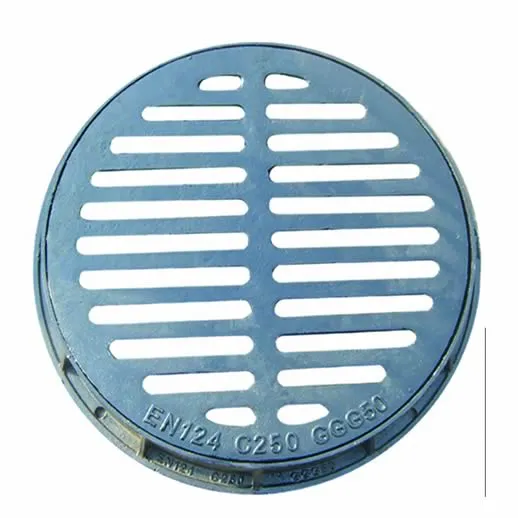gate and butterfly valves
Understanding Gate and Butterfly Valves A Comprehensive Overview
Valves play a crucial role in modern engineering, particularly in fluid control systems. Among the various types of valves used across industries, gate and butterfly valves stand out due to their distinct operational mechanisms, applications, and benefits. This article delves into the features of these two essential valve types, outlining their function, advantages, and suitable applications.
Gate Valves A Traditional Choice
Gate valves are linear motion valves that are used to start or stop the flow of fluid in a pipeline. Characterized by their wedge-shaped gate, these valves operate by raising or lowering the gate to allow or block fluid passage. One of the primary advantages of gate valves is that they are designed for a straight-line flow of fluid with minimal pressure drop. This means they are particularly efficient in applications where full flow is needed, as they do not obstruct the flow path like some other valve types.
Key Features of Gate Valves 1. Design and Construction Gate valves typically have a simple design, consisting of a body, gate, and seat. Materials commonly used include brass, stainless steel, and cast iron, allowing for versatility in various environments. 2. Flow Characteristics The flow through a gate valve is almost entirely unobstructed when fully opened, ensuring minimal turbulence and pressure loss.
3. Operation Gate valves are usually operated manually via a wheel or a hand lever. However, they can also be automated with actuators for remote operations.
4. Sealing Mechanism These valves rely on a wedging action to create a tight seal when closed, which is critical for preventing leaks.
Applications of Gate Valves Gate valves are extensively used in applications where full flow is necessary, such as in water supply systems, oil and gas pipelines, and chemical processing. They are ideal for on/off service rather than flow regulation, making them less suitable for throttling applications.
Butterfly Valves A Contemporary Solution
Butterfly valves represent a more modern approach to valve design, providing a quick and efficient means to control fluid flow. These valves utilize a circular disc or butterfly that rotates around a shaft, permitting or restricting flow through the valve opening. What sets butterfly valves apart is their ability to offer precise flow control with a relatively compact design.
gate and butterfly valves

Key Features of Butterfly Valves 1. Design and Construction Butterfly valves feature a simple yet effective construction involving a disc that pivots within the valve body. The disc can be made from various materials, including rubber, plastic, and metal, depending on the application.
3. Operation These valves can be operated manually through a handle or can be equipped with electric or pneumatic actuators for automated control.
4. Sealing Mechanism Butterfly valves employ an elastomeric sealing design, which allows for good tightness, making them suitable for applications involving various liquids and gases.
Applications of Butterfly Valves Butterfly valves are widely used in HVAC systems, water treatment facilities, and food processing. Their compact size and lightweight nature make them ideal for installation in limited spaces, and their ability to handle low-pressure drops makes them energy-efficient.
Comparing Gate and Butterfly Valves
When comparing gate and butterfly valves, several factors must be considered, including application needs, space constraints, and maintenance requirements.
- Flow Control Butterfly valves excel in flow regulation and can handle throttling, whereas gate valves are primarily intended for stop-start applications. - Size and Weight Butterfly valves are generally more compact, making them easier to install in smaller spaces. - Cost Butterfly valves typically have lower initial costs and can offer savings in terms of installation and operating expenses, especially in systems requiring frequent adjustments.
Conclusion
In conclusion, both gate and butterfly valves offer unique advantages tailored to specific applications within fluid control systems. Gate valves remain a reliable choice for applications requiring straightforward control of liquid flow, while butterfly valves thrive in environments needing versatile and efficient flow regulation. Understanding the distinctions between these two valve types enables engineers and operators to select the appropriate valve for their systems, ultimately enhancing performance and efficiency. Whether for industrial applications or municipal projects, the right valve choice is pivotal in managing fluid dynamics effectively.
-
The Smarter Choice for Pedestrian AreasNewsJun.30,2025
-
The Gold Standard in Round Drain CoversNewsJun.30,2025
-
The Gold Standard in Manhole Cover SystemsNewsJun.30,2025
-
Superior Drainage Solutions with Premium Gully GratesNewsJun.30,2025
-
Superior Drainage Solutions for Global InfrastructureNewsJun.30,2025
-
Square Manhole Solutions for Modern InfrastructureNewsJun.30,2025
-
Premium Manhole Covers for Modern InfrastructureNewsJun.30,2025
